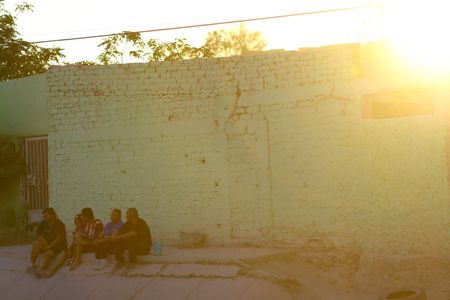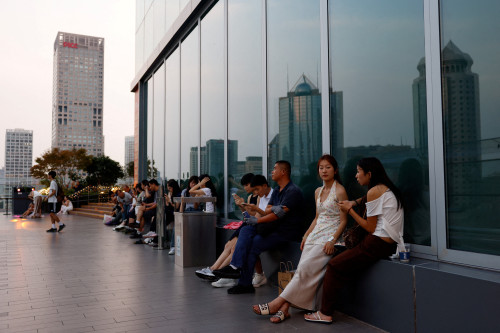MEXICALI, Mexico (Reuters) -Construction worker Brian Larreta’s job is tough any day of the year, but scorching temperatures this month in northern Mexico have made it a dangerous feat.
In Mexicali, a city of over a million people on Mexico’s northern border across from California, temperatures soared to 50 Celsius (122 Fahrenheit) this week, forcing many residents to stay inside and keeping volunteers and authorities busy trying to help those who can’t.
“Sometimes, when you’ve been in the heat for a while you get dizzy,” Larreta, 25, said on a break from shoveling cement in a parking lot under the blazing sun.
“I have seen colleagues who, in the afternoon, when they’re just about to check out from work, suddenly get dizzy or fall down, faint,” Larreta added.
A deadly heat wave spiked temperatures across Mexico in June, but while recent weeks have brought relief to more southern regions, the country’s heat-accustomed northern states have continued to bake in abnormally high temperatures.
Heat waves have historically hit Mexico in April and May, according to data from the Autonomous National University of Mexico (UNAM). This year, experts said the heat wave was worsened by drought.
The local government, along with religious groups, took to the streets to offer homeless people shelter, water, and rehydration salt packets to avoid heat strokes.
Aaron Gomez, who manages a shelter set up by the government to offer refuge from the heat, said they had assisted over 1,500 mostly homeless people with hydration and other services, including the option to stay in a shaded area with fans and cots.
Martina Sarabia, a local volunteer, mixed electrolyte powder in a pitcher of water to have ready for the city’s homeless population.
“If we see someone who needs it, we provide water with rehydration salts … so that they can get their medicine, because it really is a medicine,” said Sarabia.
(Reporting by Victor Medina; Writing by Brendan O’Boyle; Editing by Kim Coghill)






